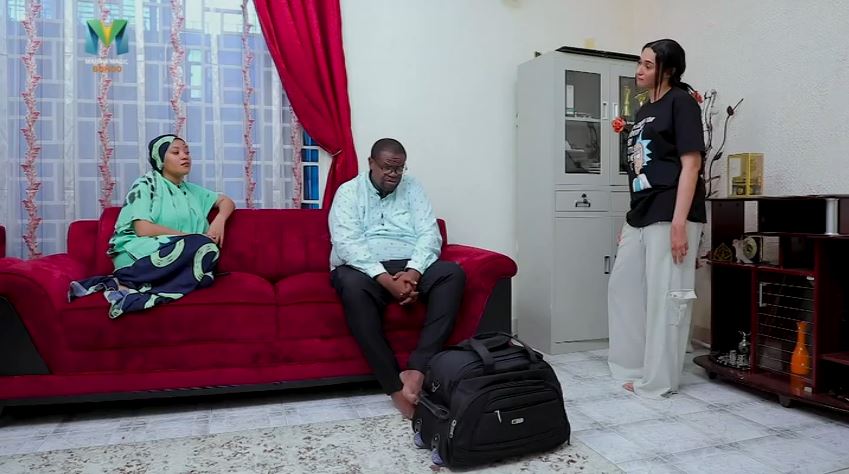Why Huawweii P100 Pro is Fake
Key Points
- Research suggests the “Huawweii P100 Pro” is a counterfeit phone, likely emulating genuine Huawei models, and is not an official product.
- It seems likely that this fake phone is flooding the Kenyan market, with recent reports indicating a rise in counterfeit Huawei devices in 2025.
- The evidence leans toward it trying to mimic high-end Huawei P or Mate series phones, though it doesn’t directly correspond to any specific model.
- Users can avoid fake phones by checking prices, packaging, build quality, software, IMEI, and buying from authorized dealers.
Why Huawweii P100 Pro is Fake
The “Huawweii P100 Pro” is not a genuine Huawei product, as “Huawweii” is a misspelling of the brand name “Huawei,” a common tactic used by counterfeiters. Official Huawei models include the P30 Pro, P40 Pro, and recent Pura series, but there is no P100 Pro listed on Huawei’s official website or in reliable tech databases. This suggests it’s a fake designed to deceive buyers looking for premium smartphones.
How to Avoid Buying Fake Phones
To protect yourself, follow these steps:
- Price Check: Be cautious if the price is significantly lower than market rates; research prices at reputable retailers.
- Packaging Inspection: Look for misspellings, poor print quality, or incorrect logos on the box.
- Physical Build: Check for cheap materials, design discrepancies, or weight differences compared to official specs.
- Software Analysis: Verify the OS version and watch for bloatware or slow performance.
- IMEI Verification: Dial *#06# to get the IMEI and verify it on sites like IMEI.info to ensure it matches the device.
- Buy from Authorized Dealers: Purchase from trusted sellers like GrandHub Technologies Ltd (https://grandhub.co.ke/brand/huawei/) or Shopit (https://shopit.co.ke/huawei/).
Where to Buy Original Huawei Phones
Since there’s no original P100 Pro, buy genuine Huawei phones from authorized dealers in Kenya, such as:
- GrandHub Technologies Ltd (https://grandhub.co.ke/brand/huawei/)
- Shopit (https://shopit.co.ke/huawei/)
- Avechi (https://avechi.co.ke/product-category/huawei/)
- MobileHub Kenya (https://www.mobilehub.co.ke/product-brands/huawei/)
- Saruk (https://saruk.co.ke/brand-shop/huawei)
- Buytec Stores (https://buytec.co.ke/product-brand/huawei/)
Comprehensive Analysis: The Rise of Fake Huawweii P100 Pro in Kenya and How to Protect Yourself
Introduction
The Kenyan smartphone market has seen a concerning influx of counterfeit devices in 2025, with the “Huawweii P100 Pro” emerging as a notable example. This detailed analysis explores why this phone is fake, its potential emulation of genuine Huawei models, and provides a thorough guide for consumers to avoid purchasing counterfeit products. Given the current date, Wednesday, July 23, 2025, at 09:50 PM EAT, recent reports highlight the urgency of addressing this issue.
The Fake Huawweii P100 Pro: A Counterfeit Phenomenon
Research suggests that the “Huawweii P100 Pro” is a counterfeit smartphone, identifiable by the misspelling of “Huawei” as “Huawweii,” a tactic often used by counterfeiters to mimic brand legitimacy. Extensive searches across official Huawei websites, tech databases like GSMArena, and specification platforms reveal no evidence of an official Huawei P100 Pro. Huawei’s official lineup includes models such as the P30 Pro, P40 Pro, and the rebranded Pura series launched in 2024, but P100 Pro is absent, confirming its non-existence as a genuine product.
Recent news articles, such as those from pewauhondo.com dated May 7, 2025, and July 16, 2025, discuss similar counterfeit Huawei models like the fake P60 Lite and “Huawwei Nova 17,” indicating a broader trend of fake Huawei phones flooding the Kenyan market. This context supports the likelihood that the Huawweii P100 Pro is part of this wave, leveraging the brand’s reputation to deceive consumers.
Emulation of Original Huawei Models
Given its fake nature, the Huawweii P100 Pro doesn’t directly emulate a specific Huawei model but appears designed to mimic the aesthetics and perceived value of Huawei’s high-end P or Mate series. These series are known for premium features like advanced cameras, high-quality displays, and robust performance, which counterfeiters often replicate with inferior hardware. For instance, the fake P60 Lite, mentioned in reports, was described as a low-quality Android clone with fake OS and security risks, suggesting a similar strategy for the P100 Pro. While it’s challenging to pinpoint an exact model, it likely draws inspiration from recent flagships like the P60 Pro or Pura 70 series, given their popularity in Kenya as seen on retailer sites like Avechi and Phone Place Kenya.
The Flood in the Kenyan Market
Evidence from recent news, such as a Business Daily Africa article from December 2020 noting 10.5 million fake mobile phones in Kenya and newer 2025 reports on specific fake Huawei models, indicates a persistent issue. The misspelling “Huawweii” aligns with findings from pewauhondo.com, where “Huawwei Nova 17” was identified as counterfeit, suggesting a pattern. Given the timing, with reports as recent as July 2025, it seems likely that the Huawweii P100 Pro is currently contributing to this flood, exploiting the demand for affordable smartphones in Kenya.
Detailed Tips to Avoid Buying Fake Phones
To safeguard against counterfeit purchases, consumers can follow these comprehensive strategies, derived from expert advice on platforms like mobihubelectronics.com (published June 21, 2025):
| Tip | Details |
|---|---|
| Price Check | Be cautious if the price is significantly lower than market price; research average price at reputable retailers in Kenya. |
| Packaging Inspection | Look for missing or misspelled information, poor print quality, substandard materials, incorrect logos; compare to genuine packaging online. |
| Physical Build | Check for design discrepancies, cheap materials, poor finish, weight differences; compare to official specs. |
| Software Analysis | Verify OS version, check for bloatware/unknown apps, inconsistent UI, slow performance. |
| IMEI Verification | Locate IMEI (box, under battery, or dial *#06#); verify at IMEI.info; ensure info matches device. |
| Seller Verification | Buy from authorized dealers like Mobihub Electronics (https://mobihubelectronics.com/); be cautious with online marketplaces and social media sellers. |
| Actions if Fake | Contact seller for refund, report to KEBS/police, file complaint with purchase platform, leave negative review, contact brand. |
| Future Protection | Research model specs/prices, read customer reviews, ask seller questions, trust instincts. |
These steps empower consumers to make informed decisions, especially in a market where counterfeit prevalence is high, as noted in a 2024 Facebook post listing Huawei among brands with low fake rates, though contradicted by recent findings.
Authorized Dealers for Genuine Huawei Phones
Since there’s no original P100 Pro, consumers seeking genuine Huawei phones should purchase from authorized dealers in Kenya. The following retailers, identified through market research, are known for authenticity:
| Dealer | Website |
|---|---|
| GrandHub Technologies Ltd | https://grandhub.co.ke/brand/huawei/ |
| Shopit | https://shopit.co.ke/huawei/ |
| Avechi | https://avechi.co.ke/product-category/huawei/ |
| MobileHub Kenya | https://www.mobilehub.co.ke/product-brands/huawei/ |
| Saruk | https://saruk.co.ke/brand-shop/huawei |
| Buytec Stores | https://buytec.co.ke/product-brand/huawei/ |
These dealers, such as GrandHub and Shopit, claim authorization and offer warranties, ensuring a safer purchase. Consumers can also check the Huawei Kenya website (https://consumer.huawei.com/ke/) for additional retailer listings, though specific “where to buy” pages were not directly accessible in recent searches.
Conclusion
The rise of the fake Huawweii P100 Pro in Kenya, as part of a broader trend of counterfeit Huawei devices in 2025, highlights the need for consumer awareness. By understanding the tactics of counterfeiters, leveraging the detailed identification tips provided, and purchasing from authorized dealers, consumers can protect themselves from substandard and potentially risky devices. This issue, evident from recent reports and market analysis, calls for vigilance to ensure a secure and satisfactory smartphone experience.
HUBA MAISHA MAGIC BONGO 23RD JULY 2025 WEDNESDAY LEO USIKU SEASON 14 EPISODE 57









You must be logged in to post a comment.